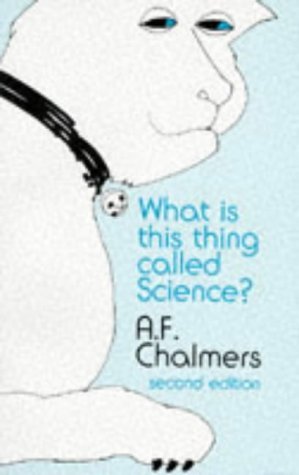Filters
Clear allSubject
- Careers (381) Apply Careers filter
- Climate Change (29) Apply Climate Change filter
- Computing (99) Apply Computing filter
- Creative arts and media (3) Apply Creative arts and media filter
- Cross curricular (97) Apply Cross curricular filter
- Design and technology (414) Apply Design and technology filter
- Engineering (320) Apply Engineering filter
- Food Preparation and Nutrition (24) Apply Food Preparation and Nutrition filter
- Health and safety (3) Apply Health and safety filter
- Leadership (23) Apply Leadership filter
- Mathematics (356) Apply Mathematics filter
- Personal development (28) Apply Personal development filter
- Psychology (34) Apply Psychology filter
- Space (12) Apply Space filter
- STEM Ambassadors (13) Apply STEM Ambassadors filter
- STEM Clubs (12) Apply STEM Clubs filter
Age range
Type
- Activity sheet (540) Apply Activity sheet filter
- Article (567) Apply Article filter
- Assessment (16) Apply Assessment filter
- Audio (56) Apply Audio filter
- Data set (14) Apply Data set filter
- Demonstration (70) Apply Demonstration filter
- Diagram (1) Apply Diagram filter
- Experiment (179) Apply Experiment filter
- Game (9) Apply Game filter
- Group work (22) Apply Group work filter
- Image (36) Apply Image filter
- Information sheet (260) Apply Information sheet filter
- Interactive resource (66) Apply Interactive resource filter
- Lecture (4) Apply Lecture filter
- Open-ended task (4) Apply Open-ended task filter
- Poster (41) Apply Poster filter
- Presentation (119) Apply Presentation filter
- Quiz (7) Apply Quiz filter
- Research (450) Apply Research filter
- Self assessment (27) Apply Self assessment filter
- Simulation (2) Apply Simulation filter
- Teacher guidance (905) Apply Teacher guidance filter
- Textbook (165) Apply Textbook filter
- Video (538) Apply Video filter
- (-) Remove Include Physical Resources filter Include Physical Resources
Showing 5218 results
This video explains the term spin. It introduces the idea of a magnetic dipole in electrons and shows how, in an external magnetic field, electron spins can be aligned or opposed (different quantum states).
However, when considering just two electrons coupled together the possible quantum positions becomes...
This infographic for post-16 students explains the different methods of speciation by natural selection. It summarises allopatric and sympatric speciation
This activity is part of Endeavour, an online collection of inquiry-based teaching resources created by experts...
This item is one of over 25,000 physical resources available from the Resources Collection. The Archive Collection covers over 50 years of curriculum development in the STEM subjects. The Contemporary Collection includes all the latest publications from UK educational publishers.

This item is one of over 25,000 physical resources available from the Resources Collection. The Archive Collection covers over 50 years of curriculum development in the STEM subjects. The Contemporary Collection...
This is a video that asks young adults their opinion of nuclear power being used in Australia. 90% of Australia’s power derives from coal and gas. There are no nuclear power stations.
The comments from audience could be used to initiate similar discussions for the UK.
This Catalyst article explores the complex structure of cells, and numerous theories of how they were formed. It describes how the development of electron microscopes has allowed greater detail of cellular strutures and organelles to be understood. The article includes detailed electron micropgraphs, along with...
This worksheet in this resource introduces students to the topics of classification and binomial nomenclature. The idea of hierarchy is illustrated, before explaining Linnaeus’s system of classification and the terms kingdom, phylum, class, order, family, genus and species. There is also a useful introduction to...
This video uses two oppositely charged metal plates to demonstrate that a candle flame contains ions. Positive ions are attracted to the negative plate, while negative ions the positive plate. Even when the candle is extinguished, the smoke is attracted to both plates and so must also contain ions.
...A multiple choice quiz on medicine for AS/A level chemistry.
Although it is written for OCR AS/A level chemistry (Salters) H033/H433 course, it can be edited to suit your scheme of work.

Engage students in science exploration from the inside out with this classroom science supply! Here...
A Catalyst article about the naming system used for biological species, devised by Linnaeus. The purpose of biological names is investigated and the article also explains how the naming system works.
This article is from Catalyst: Secondary Science Review 2009, Volume 19, Issue 3.
...
|
These cards help students to compare and contrast the four major types of cells (plant, animal, fungal, bacterial). You could use them as simple revision cards or print out two sets and play a top trumps or happy... |
|
Use our downloadable cards to check knowledge of the organelles in different types of cell. These cards help students to compare and contrast the four major types of cells (plant, animal, fungal, bacterial... |
The aim of this investigation is to find the value of a number of resistors using a Wheatstone bridge. Although this is an historical piece of equipment that has been superseded by modern methods it provides an excellent way to understand potential difference in circuits.
This Catalyst article looks at agricultural plants, that are prone to many diseases, and scientists who develop new techniques to fight these diseases.
...